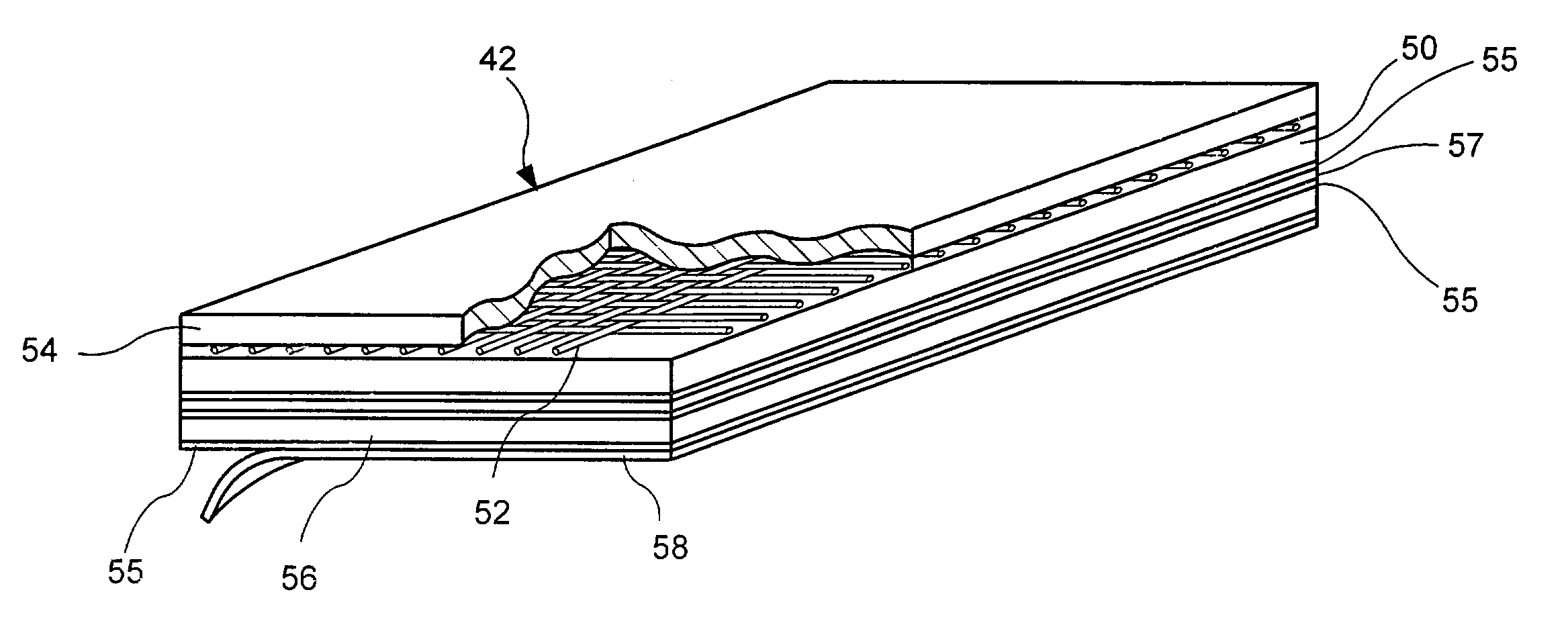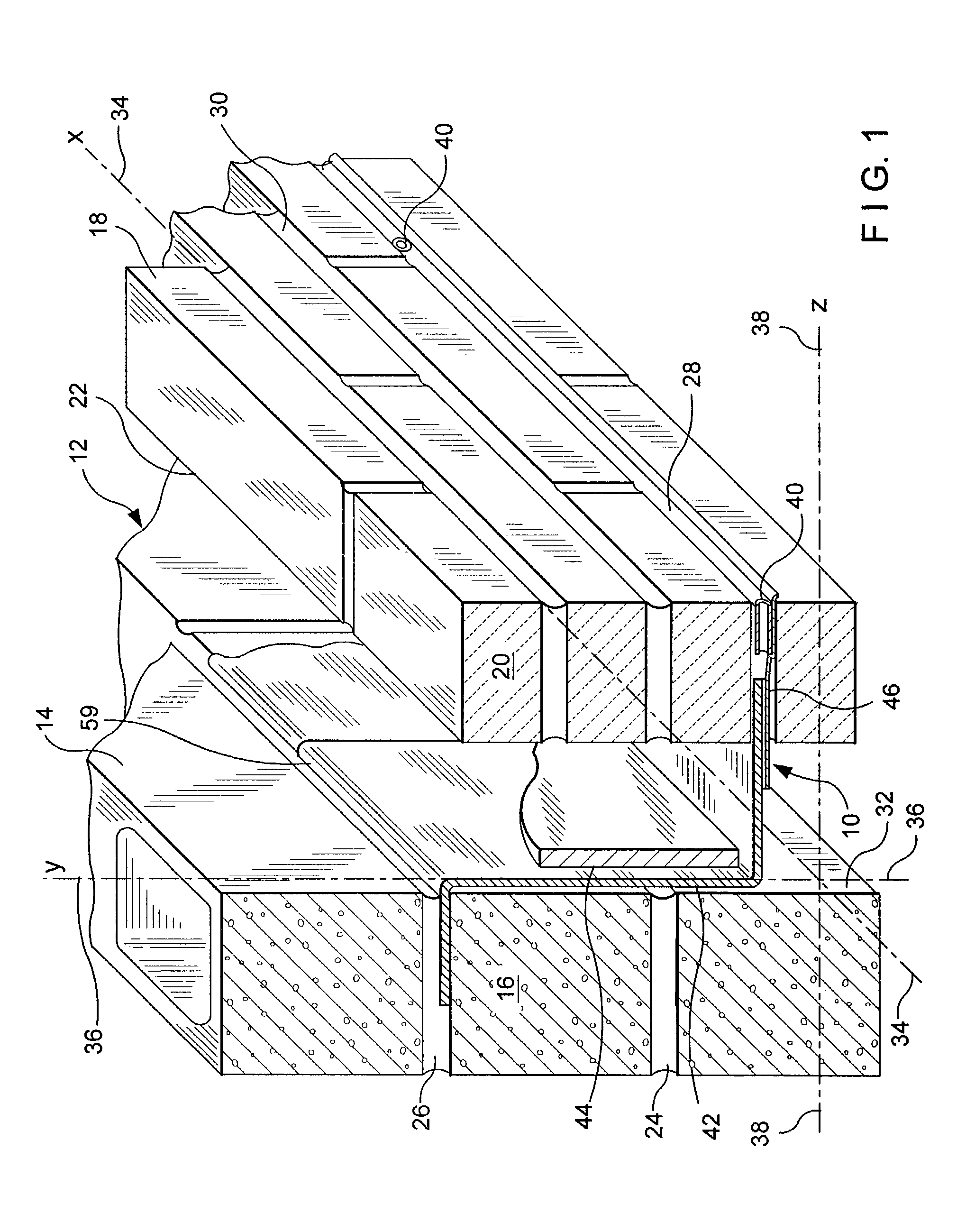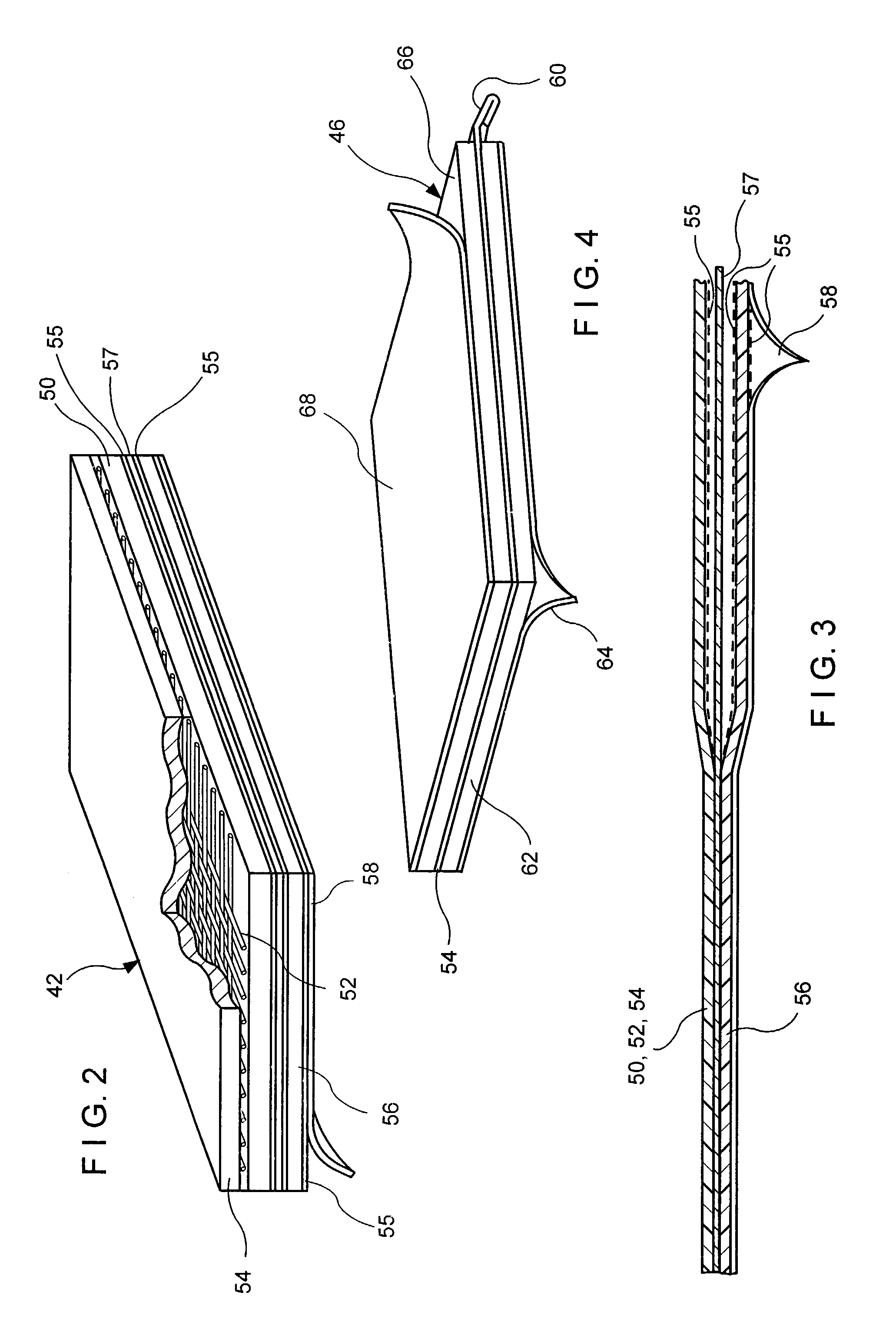Metal foil masonry flashings and termination bar therefor
a technology of masonry flashing and metal foil, which is applied in the direction of snow traps, transportation and packaging, chemistry apparatus and processes, etc., can solve the problems of insufficient adhesive quality for rough masonry block surfaces, insufficient pressure-sensitive hot melt adhesive technology needed for peel-and-stick applications, and insufficient filling of pressure-sensitive products, etc., to achieve the effect of enhancing tear and puncture resistan
- Summary
- Abstract
- Description
- Claims
- Application Information
AI Technical Summary
Benefits of technology
Problems solved by technology
Method used
Image
Examples
Embodiment Construction
[0053]In the metal foil masonry flashing system of this invention, in contradistinction to the parent case, hot melt adhesives are used to attach polymeric flashing material to at least one side of the metal foil and to the cavity face of the masonry inner wythe. The masonry flashing is emplaced behind the insulation which, in turn, serves to protect against thermal losses, to reduce sound, and to prevent water vapor condensing on colder surfaces. The metal foil increases the longevity of the flashing by enhancing the tensile strength and by improving tear and puncture resistance.
[0054]Referring now to FIGS. 1 through 4, the first embodiment of this invention in which a masonry flashing system, referred to generally by the reference designator 10, is shown. In this embodiment, a cavity wall structure 12 is shown having an inner wythe 14 of masonry blocks 16 and an outer wythe 18 of facing brick 20. Between the inner wythe 14 and the outer wythe 18, a cavity 22 is formed. Successive ...
PUM
| Property | Measurement | Unit |
|---|---|---|
| weight | aaaaa | aaaaa |
| pressure | aaaaa | aaaaa |
| elastomeric | aaaaa | aaaaa |
Abstract
Description
Claims
Application Information
 Login to View More
Login to View More - R&D
- Intellectual Property
- Life Sciences
- Materials
- Tech Scout
- Unparalleled Data Quality
- Higher Quality Content
- 60% Fewer Hallucinations
Browse by: Latest US Patents, China's latest patents, Technical Efficacy Thesaurus, Application Domain, Technology Topic, Popular Technical Reports.
© 2025 PatSnap. All rights reserved.Legal|Privacy policy|Modern Slavery Act Transparency Statement|Sitemap|About US| Contact US: help@patsnap.com



